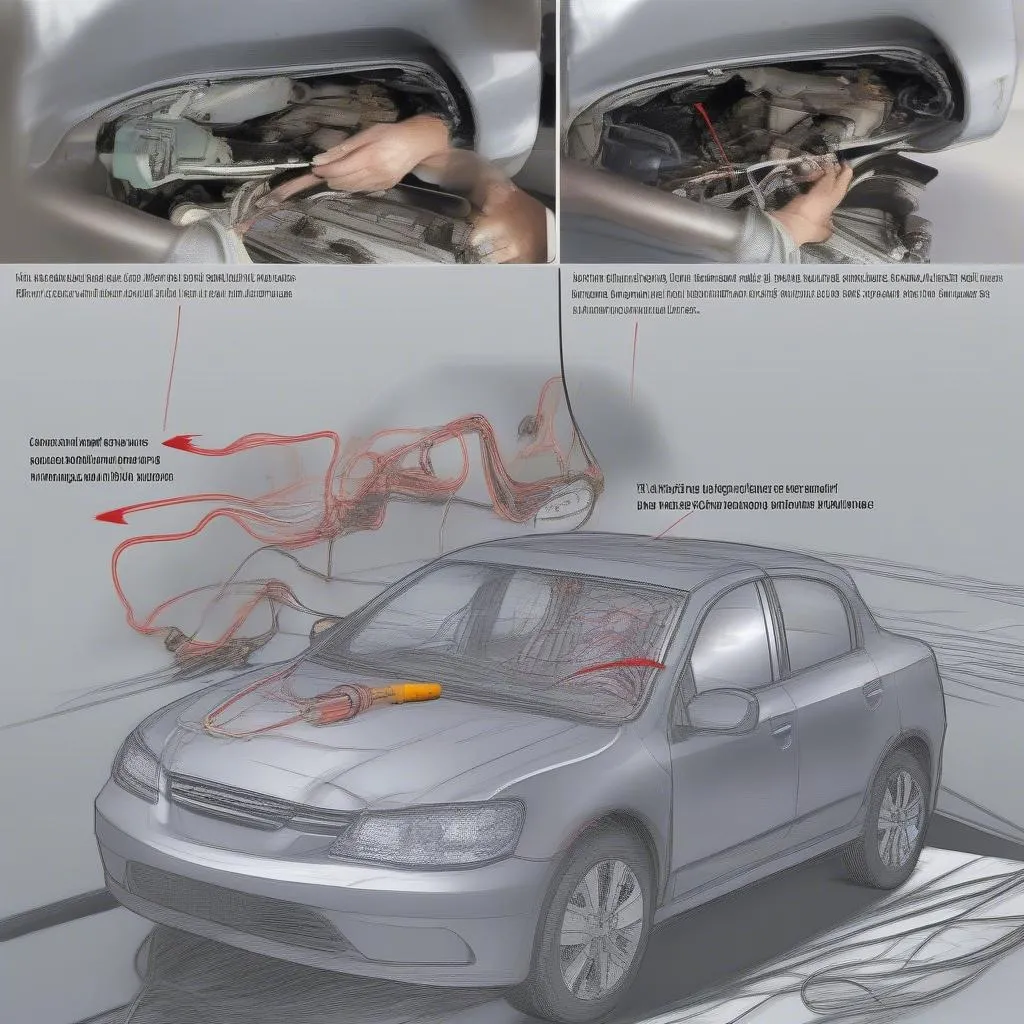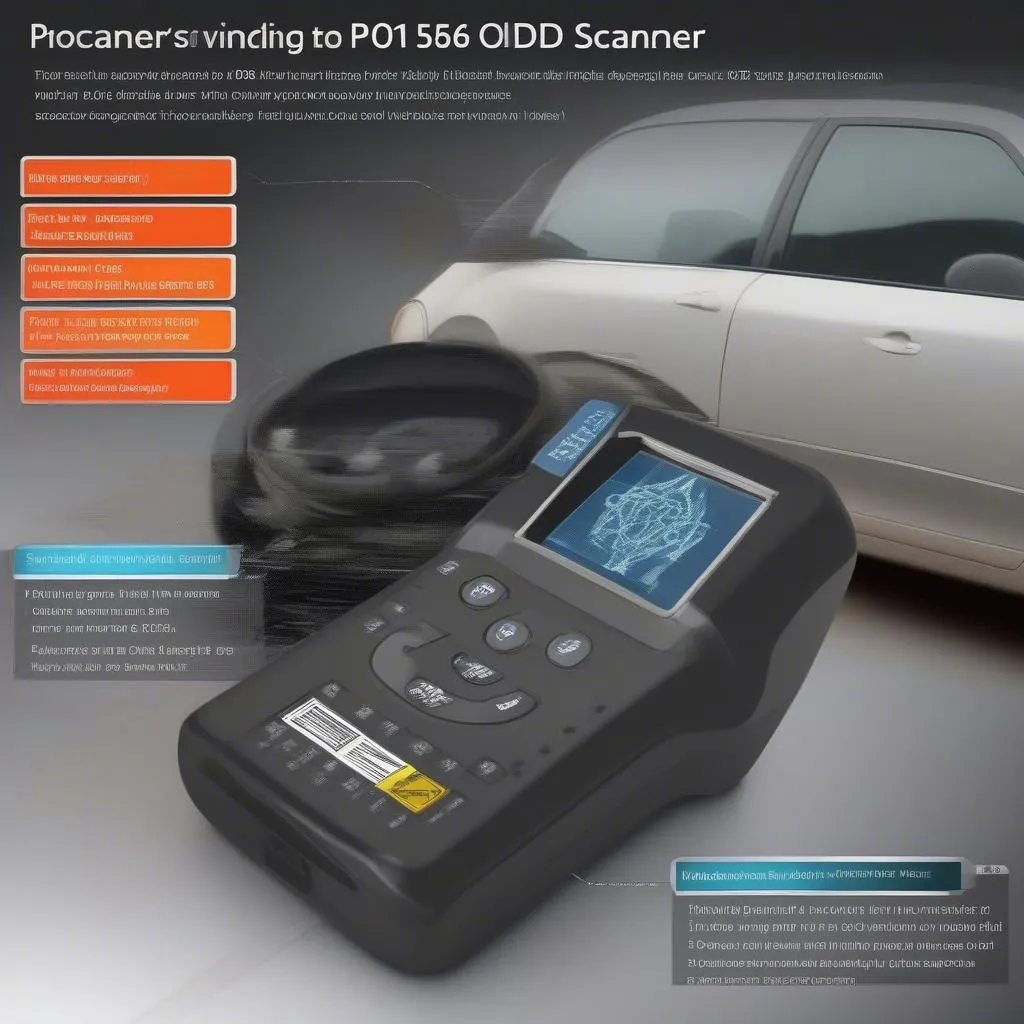Imagine yourself driving down the road when suddenly your car’s engine starts to sputter and jerk. You pull over to the side of the road and check the dashboard, only to find a dreaded “Check Engine” light illuminated, accompanied by the code P0505. What’s going on?
What Does OBD Code P0505 Mean?
OBD code P0505 indicates a problem with the Vehicle Speed Sensor (VSS). This sensor, often located near the transmission, plays a crucial role in monitoring the speed of your vehicle. It transmits this information to the Engine Control Module (ECM), which in turn regulates various functions like fuel injection, transmission shifting, and traction control.
What Are the Common Causes of P0505?
There are several reasons why your Dodge may be displaying code P0505. The most common causes include:
1. Faulty Vehicle Speed Sensor (VSS)
The VSS itself may be malfunctioning, either due to a wiring issue, a broken sensor, or a damaged internal component. This is the most frequent culprit behind P0505.
2. Broken or Damaged Wiring
The wiring connecting the VSS to the ECM can be damaged due to wear and tear, rodent damage, or even a simple loose connection.
3. Issues with the Transmission
Problems within the transmission, like a faulty output shaft speed sensor or a damaged transmission control module, can also trigger P0505.
4. Issues with the ABS System
In some cases, a malfunctioning Anti-lock Braking System (ABS) can interfere with the VSS and lead to the code P0505.
Symptoms of P0505 Code
You might experience a few warning signs along with the P0505 code:
- Check Engine Light: The most common indicator, signaling a problem with the vehicle’s systems.
- Sluggish Acceleration: Your vehicle might feel sluggish when you try to accelerate, as the ECM relies on the VSS information for proper fuel injection.
- Erratic Transmission Shifting: The transmission may shift erratically or even fail to shift smoothly.
- Cruise Control Malfunction: Cruise control might not function properly or at all.
- Traction Control Malfunction: Traction control may be erratic or fail to function.
How to Fix P0505 Code
Fixing code P0505 involves diagnosing the underlying problem, which can be done in a few steps:
- Inspect the VSS: Start by visually inspecting the VSS for any signs of damage or corrosion.
 Inspecting Vehicle Speed Sensor (VSS)
Inspecting Vehicle Speed Sensor (VSS)
-
Check Wiring and Connections: Inspect the wiring harness connected to the VSS, looking for any breaks, chafing, or loose connections.
-
Use an OBD2 Scanner: Use a reliable OBD2 scanner to read the code, which will provide you with more specific information about the problem.
 Using an OBD2 Scanner to Diagnose P0505
Using an OBD2 Scanner to Diagnose P0505
-
Check Transmission: If you suspect a problem with the transmission, have it inspected by a qualified mechanic.
-
Check ABS System: If the ABS system is suspected, have it checked by a qualified mechanic.
Important: If you’re not comfortable with automotive repairs, seek professional help from a qualified mechanic.
Frequently Asked Questions about P0505
Q: Is P0505 a serious code?
A: While P0505 might not seem serious at first, it can lead to other issues if left unaddressed. A faulty VSS can affect your vehicle’s performance, fuel efficiency, and safety.
Q: Can I drive with P0505?
A: You can drive with P0505, but it’s best to get it fixed as soon as possible. Driving with a faulty VSS can lead to further damage and might make your vehicle unsafe to operate.
Q: How much does it cost to fix P0505?
A: The cost of fixing P0505 can vary depending on the underlying cause, the labor costs in your area, and the specific vehicle model. However, it’s usually less expensive to address the issue early on rather than waiting for the problem to escalate.
Q: Can I reset the P0505 code myself?
A: You can reset the code using an OBD2 scanner. However, the code will reappear if the underlying problem isn’t fixed.
Q: Is there a way to prevent P0505 from happening?
A: While you can’t fully prevent P0505, you can help minimize the risk by performing regular maintenance on your vehicle, including inspecting wiring, checking sensor connections, and ensuring the transmission fluid is clean and at the proper level.
Additional Resources
For more information about specific OBD-II codes for Chrysler, Dodge, and Jeep vehicles, check out our comprehensive guide: https://techcarusa.com/chrysler-specific-obd-ii-codes/.
Need professional help? Contact us at +84767531508. We are a team of experienced automotive technicians available 24/7 to assist you with diagnosing and fixing your vehicle’s issues.